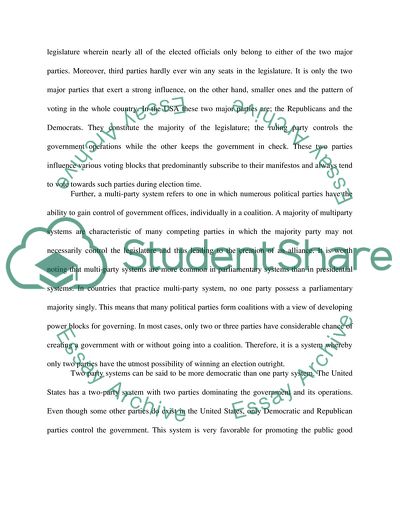Cite this document
(One-Party, Two-Party and Multi-Party Democracies Report Example | Topics and Well Written Essays - 2500 words, n.d.)
One-Party, Two-Party and Multi-Party Democracies Report Example | Topics and Well Written Essays - 2500 words. https://studentshare.org/politics/1862800-if-two-party-systems-are-more-democratic-than-one-party-systems-are-multi-party-systems-more-democratic-than-two-party-systems
One-Party, Two-Party and Multi-Party Democracies Report Example | Topics and Well Written Essays - 2500 words. https://studentshare.org/politics/1862800-if-two-party-systems-are-more-democratic-than-one-party-systems-are-multi-party-systems-more-democratic-than-two-party-systems
(One-Party, Two-Party and Multi-Party Democracies Report Example | Topics and Well Written Essays - 2500 Words)
One-Party, Two-Party and Multi-Party Democracies Report Example | Topics and Well Written Essays - 2500 Words. https://studentshare.org/politics/1862800-if-two-party-systems-are-more-democratic-than-one-party-systems-are-multi-party-systems-more-democratic-than-two-party-systems.
One-Party, Two-Party and Multi-Party Democracies Report Example | Topics and Well Written Essays - 2500 Words. https://studentshare.org/politics/1862800-if-two-party-systems-are-more-democratic-than-one-party-systems-are-multi-party-systems-more-democratic-than-two-party-systems.
“One-Party, Two-Party and Multi-Party Democracies Report Example | Topics and Well Written Essays - 2500 Words”. https://studentshare.org/politics/1862800-if-two-party-systems-are-more-democratic-than-one-party-systems-are-multi-party-systems-more-democratic-than-two-party-systems.


